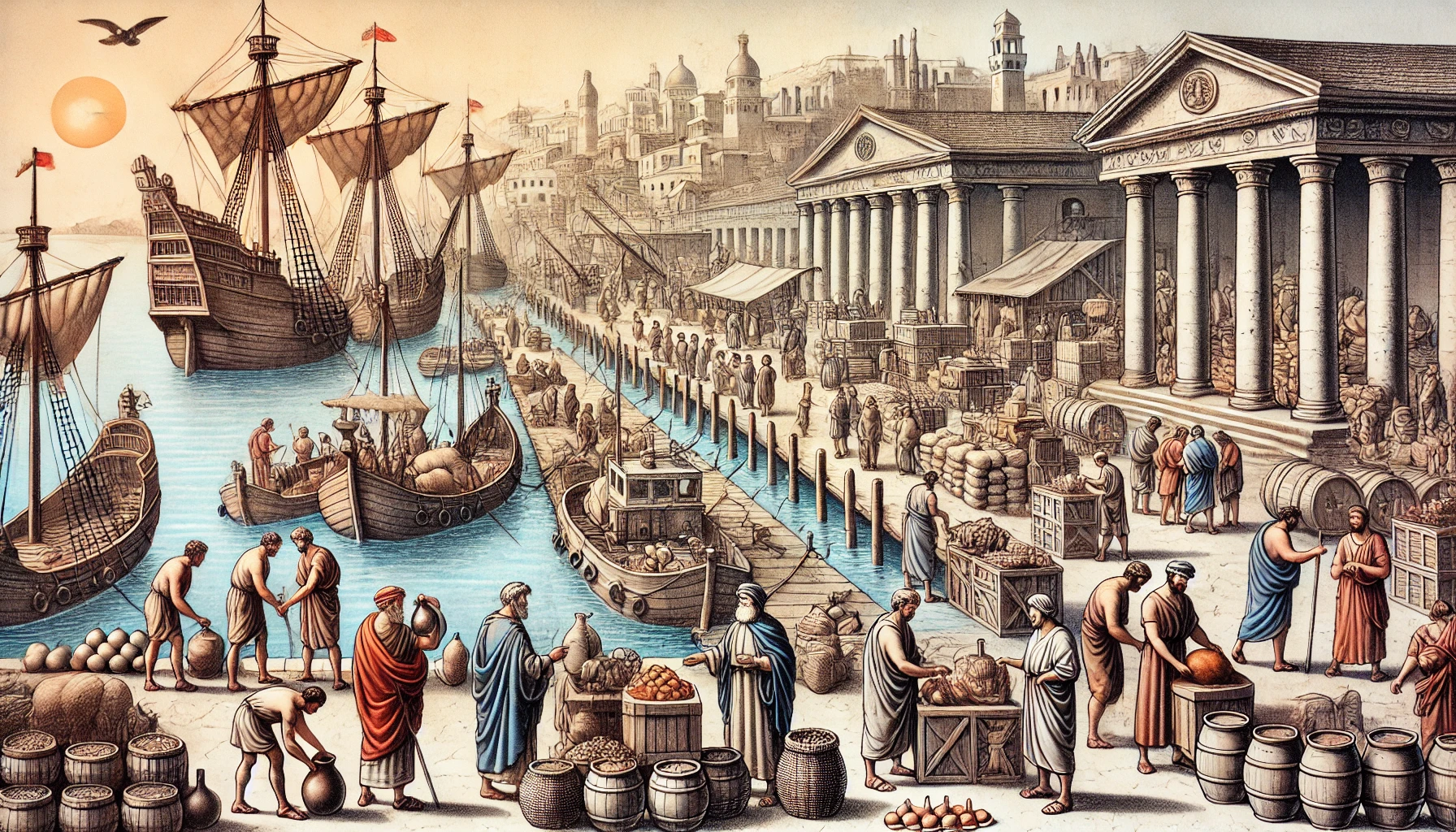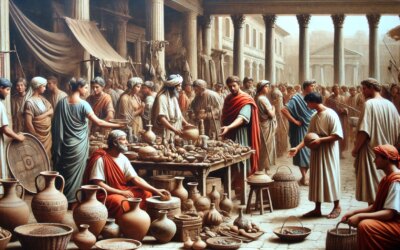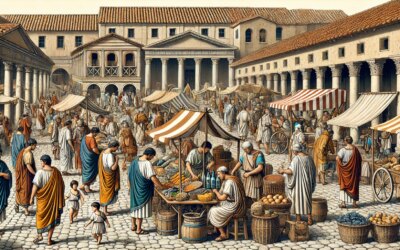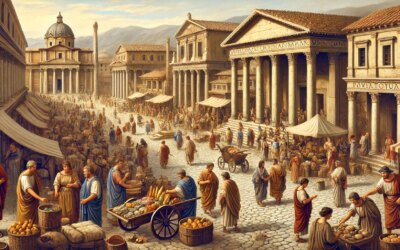Anchoring the Empire: The Lifeblood of Roman Trade
In the 1st century AD, the Roman Empire’s strength rested not only on legions and laws but also on its mastery of maritime trade. At the heart of this system stood the Roman harbor—bustling epicenters of economic activity, engineering ingenuity, and cultural exchange. Whether in Ostia, Alexandria, or Carthage, Roman ports were more than gateways—they were vital nodes in a commercial web stretching from Britain to India.
Design and Structure of Roman Harbors
Roman harbors combined functionality with formidable architecture. Key features included:
- Breakwaters: Curved stone barriers that calmed incoming waves.
- Piers and quays: Platforms for docking and unloading cargo.
- Lighthouses: Such as the Pharos of Alexandria, guiding ships by flame or reflective bronze mirrors.
- Warehouses (horrea): Massive storage buildings for goods like grain, olive oil, wine, and textiles.
- Customs offices: Where Roman officials inspected cargo, assessed taxes, and ensured compliance with trade laws.
Ostia, the principal port of Rome, exemplified Roman maritime engineering with its canals, massive warehouses, and Portus—an artificial harbor built under Claudius and Trajan.
The Maritime Network and Goods in Transit
Roman harbors bustled with activity at dawn. Merchant ships from Spain, Egypt, Africa, Gaul, and Asia Minor arrived laden with amphorae, spices, perfumes, cloth, metals, and exotic goods. Roman cargo ships, like the navis oneraria, were broad and sturdy, capable of carrying hundreds of tons.
Typical imports included:
- Grain from Egypt and North Africa—vital for feeding Rome’s growing population.
- Wine from Campania and Gaul—consumed throughout the empire.
- Olive oil from Hispania—used for cooking, lighting, and hygiene.
- Luxury goods like silk from China and spices from India—transported overland and then by ship.
In return, Roman exports included glassware, ceramics, tools, and manufactured goods, spreading Roman material culture across the Mediterranean basin.
People of the Port: Who Made It Work
Harbors were multicultural crossroads, populated by sailors, dockworkers, customs officers, shipwrights, translators, merchants, freedmen, and slaves. Many port towns developed distinct communities—Jewish, Greek, Syrian—reflecting the empire’s diversity.
Guilds and collegia organized professions: longshoremen, shippers, and even torchbearers had their own associations. Priests of Mercury—the god of commerce and travelers—maintained temples near harbors, offering blessings for safe passage and profitable trade.
Customs, Control, and Taxation
Rome imposed strict regulations and customs duties. All incoming goods were declared and assessed. Tax collectors (portitores) monitored cargo, and the scriptura recorded transactions and ownership. Officials ensured weights and measures were standardized to avoid fraud.
Customs houses often displayed inscriptions outlining fees, exemptions, and penalties. Some goods, like grain for the annona (state grain supply), were exempt or controlled directly by the state.
Port Security and Naval Presence
Security was paramount. Harbors housed detachments of naval marines and port guards to deter piracy, enforce customs laws, and prevent smuggling. The Roman navy also patrolled key shipping lanes, especially in the Tyrrhenian and Aegean Seas.
Naval bases, like those at Misenum and Ravenna, provided rapid response to maritime threats and supported both trade and military logistics.
The Role of Ostia: Rome’s Maritime Gateway
No port was more vital than Ostia, located at the mouth of the Tiber. As Rome’s primary maritime gateway, Ostia handled vast quantities of grain, timber, marble, and luxury imports. Its horrea—such as the Horrea Epagathiana—were architectural marvels, organized for efficient loading, unloading, and distribution.
Later enhancements under Claudius and Trajan included the construction of a vast artificial harbor (Portus), equipped with a lighthouse, canals, and massive docking facilities. These improvements turned Ostia into a world-class maritime hub.
Provincial Harbors and Empire-Wide Reach
Rome’s network extended to provincial harbors across the empire. Alexandria connected Rome to the Nile and Red Sea; Puteoli linked to Campania and the western seas; Carthage, Leptis Magna, and Caesarea Maritima served Africa and the Levant.
These ports facilitated not just trade, but military deployment, cultural diffusion, and imperial administration. From these maritime arteries flowed the power and prosperity of the Roman world.
Enduring Legacy
Many Roman harbors inspired later medieval and modern ports. Their breakwaters, lighthouses, and warehouse designs influenced European maritime infrastructure for centuries. Archaeological excavations at Ostia and Portus continue to reveal how Rome mastered coastal logistics.
Even today, remnants of Roman piers, submerged quays, and amphorae-laden shipwrecks testify to the scale, sophistication, and ambition of Roman maritime trade.
The Empire’s Horizon Was the Sea
In every splash of an oar, every groan of a timber hull against stone quays, Rome expanded its grasp. The harbor was where distance disappeared, where spices and silk met stone and scroll. More than ports, Roman harbors were gateways to empire, commerce, and connection—reminding us that Rome’s dominion was as much over the sea as it was over land.






